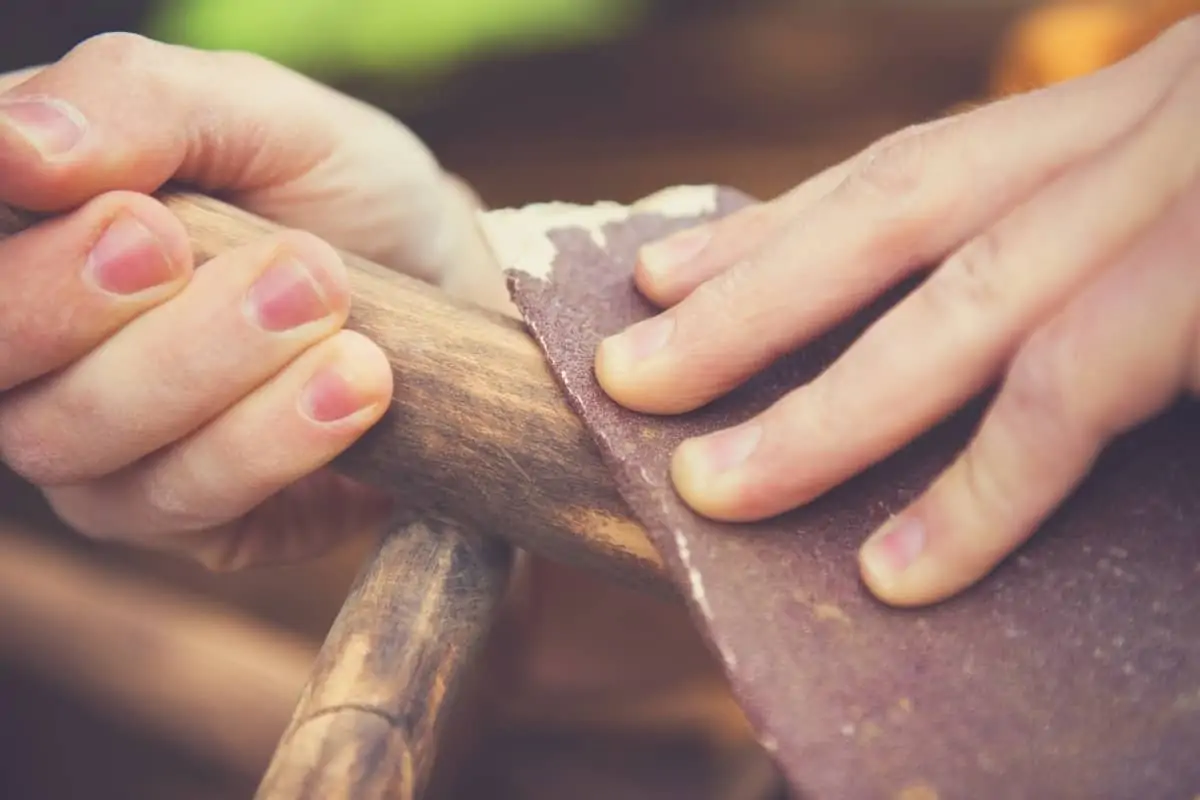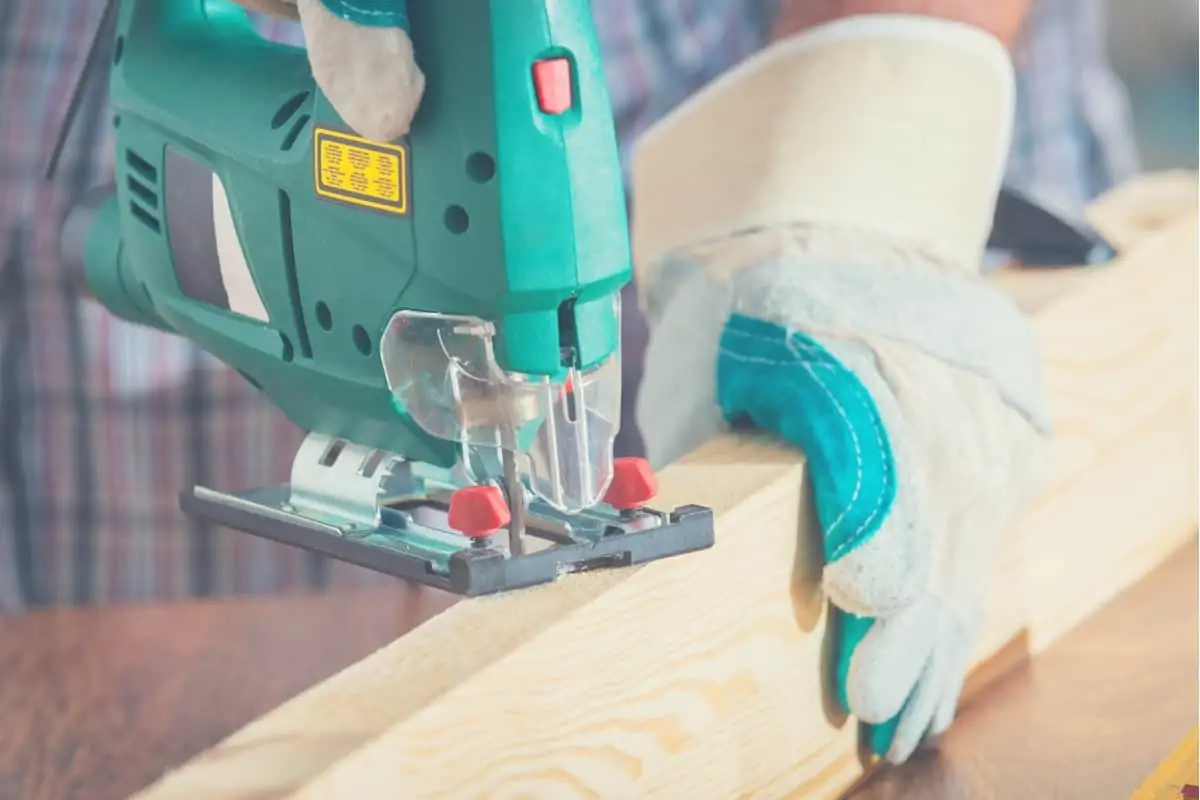Wood stain is great for putting a bit of color into your hardwood floors or furniture. But if you want to revitalize this wood at any point, you first need to know how to remove stain from wood.
Removing wood stain isn’t a complicated process, but you need to first be familiar with the tools and type of stain used on the material.
In this article I’ll talk you through the steps of how to remove stain from wood.
First I’ll go through the tools and equipment needed and how to decide on the best removal method. Then I’ll finish with detailed steps on how to go about removing wood stain.
Hopefully by the end you’ll have all the information you need to tackle this project and give your woodwork a new lease of life!
Tools and Equipment
Removing wood stain is a pretty straightforward task and doesn’t require any complicated tools. Perhaps the most specialist thing you’ll need is the stain stripper itself.
Here is a list of the main tools and equipment you need to remove wood stain:
- Paintbrush
- Plastic scraper
- Steel wool
- Rags
- Drop cloth
- Sandpaper – medium and fine grit
- Electric sander (not necessary but useful)
- Wood stripper
I’d also recommend the following safety equipment when working with wood stripper:
- Respirator mask
- Safety glasses
- Rubber gloves / Work gloves
- Long sleeves / trousers
Types of Wood Stain Stripper
There are a few different types of stain stripper that can be useful for this project. In order to know which is best, you’ll need to determine the type of stain that’s been used.
Generally, it’ll either be a straight wood stain that soaks into the wood or a varnish that contains stain. I’ll discuss this in more detail below.
First, we’ll look at the main types of wood stain stripper and their pros and cons.
Chemical Wood Stain Stripper
Chemical wood strippers are the most common types of stain remover. They’ll work against both varnish and stains quite effectively.
You’ll find chemical wood strippers in liquid and gel form. The main difference is really the product’s viscosity. Gel strippers will be better on vertical surfaces because they obviously won’t run as much.
The main advantages of chemical wood strippers is that they’re inexpensive, widely available, and work quickly. You’ll begin to see results within 30 minutes and will rarely have to wait longer than an hour.
Chemical wood strippers are often made from solvents such as dichloromethane, which is also known as methylene chloride.
While this is really effective at stripping finishes off wood, it does produce horrible fumes.
Solvents work by having a similar chemical structure to the product they’re removing. Essentially, wood strippers will begin to dissolve and lift the stain off the wood without damaging the material underneath.
You can use chemical strippers to remove even dark wood stain. You might need to lighten the stain first using a wood bleach or similar product, but chemical wood stripper will eventually lift the stain from the wood.
Pros
- Work quickly and effectively against various wood stains.
- Inexpensive and widely available.
- Come in gel or liquid varieties for different applications.
Cons
- Produce harsh fumes – use outdoors or in a well-ventilated area.
Citrus Wood Stain Stripper
A more “natural” alternative to chemical wood strippers are ones made from citrus bases.
These wood stain strippers are based on limonene, which is a chemical found in citrus fruit. Limonene is a terpene, which is a natural solvent.
The obvious advantage over chemical wood strippers is that citrus-based strippers don’t produce harsh fumes when working through the stain.
Although chemical strippers rarely damage the wood, this is a problem you don’t need to worry about at all with citrus wood strippers. They’re much more gentle on the material.
But the main disadvantage is that they work slower, and you might need more than one attempt.
Also, try and steer clear of citrus strippers that you need to rinse off with water, as this can cause the wood to swell, meaning you then need to sand it after.
Citrus-based strippers work on both varnish and traditional wood stain, but you’ll probably get better results with a chemical stripper if dealing purely with stain.
Pros
- A natural alternative to chemical strippers.
- Doesn’t produce harsh fumes.
- Just as widely available as chemical strippers.
- Can be used for both varnish and stain.
Cons
- Will likely need more than one attempt.
- Works slower than chemical strippers.
- Possibly needs to be rinsed off with water.
Heat Gun
You can use a heat gun to soften and remove varnish from wood, but it won’t work against stain on its own.
As the stain soaks into the wood, it can’t be scraped off in the same way as varnish. Therefore, a heat gun wouldn’t be the best option.
A disadvantage of heat guns is that they can scorch and burn the wood if held too close for too long.
I won’t bother covering heat guns in too much detail in this article, as, in my opinion, they’re not an effective way of removing wood stain.
If you’re interested in learning more, you can check out this video on how to remove varnish using a heat gun.
Acetone
Acetone is the main chemical in nail polish remover and is – you guessed it – a solvent. But can it remove wood stain?
Acetone can be used to remove wood stain from a surface, but isn’t as effective as dedicated products. What’s more, if left on the wood for too long, it can damage the grain and bleach it.
While acetone can work as a wood stain remover, I wouldn’t recommend it. The risk of damage is too high, and you’d need a lot of acetone to strip a whole floor.
Mineral Spirits
Mineral spirits won’t remove wood stain, but they will lighten it. Mineral spirits aren’t as strong as chemical strippers and so won’t completely pull the stain out of the wood. But if you simply want to lighten dark stain, they’ll do the job.
Paint thinner also won’t remove wood stain completely. You can use it to thin oil-based wood stains, which will make them lighter when applied. But again, paint thinner isn’t a strong solvent like chemical wood strippers, and so won’t remove stain from the material.
The best way to remove wood stain is to use a dedicated chemical or citrus-based stripper. These products are designed specifically for this purpose and so will be most effective. It’s best to avoid products that’ll dry out or bleach the wood.
How to Determine the Type of Stain Used
As I mentioned earlier, the type of stripper you use will depend on the type of stain that’s been used.
Generally, this’ll either be a pure wood stain or a varnish that contains wood stain.
Varnish is much easier to remove because it sits on the wood’s surface rather than soaking into the grain.
The easiest way to tell what product has been used is to simply look at it. Varnished wood will usually be shiny, whereas stained wood won’t.
Varnish also seals the wood, and this is fairly easy to work out. Stained wood will usually still have a distinct grain.
If in doubt, apply a small amount of stripper to a hidden area, or try sanding it. Varnish will lift easier than stain and will leave bare wood underneath. Stained wood will usually retain a hint of stain after stripping.
For more information, you can check out this video on different types of wood stain.
Removing Stain from Wood
Now that we’ve gone through the main products you can use, it’s time to look at the steps involved in removing wood stain.
These steps are applicable to both chemical and citrus wood strippers. I won’t bother talking about any of the other products because I feel these two are the most effective.
Follow these steps for professional wood stripping every time.
Step 1: Preparing the work area.
If possible, strip the wood outside. If you can’t take it outside, make sure the room is well ventilated; open windows and let the room air.
Put down a drop cloth to catch spills.
Clean the surface with soapy water, rinse it down with clean water, and dry it off with a towel.
If necessary, tape off any areas such as skirting boards or walls.
Step 2: Organize tools and equipment.
Gather all the tools you’ll need so they’re ready. Refer to the list above to remind yourself of what you’ll need.
Put on your safety goggles, respirator mask, and work gloves.
Step 3: Prepare the stripper in a container.
Make sure the container is suitable for holding chemical solvents. This’ll usually be metal – avoid plastic at all costs.
Read over the manufacturer’s instructions before going any further so you know exactly what you need to do.
Pour a small amount of stripper into the container – you can top this up when needed.
Step 4: Apply stripper to the stained wood.
Take your paintbrush and dip it into the stripper. Brush the stripper across the wood, making sure you apply it in a thick and even layer.
Continue until the whole surface is covered.
For large pieces of furniture or floors, it might be helpful to work in stages so you can keep control of the soaking time.
Step 5: Leave it to soak.
Leave the stripper to soak as per the instructions. This might be as little as 15 minutes or a few hours.
Check it over every 5 minutes or so in order to catch any problems early. Reapply more stripper to dry areas.
Step 6: Remove the stripper and stain from the wooden surface.
Take your plastic scraper and run it over the surface. Start in a corner and work directly away from yourself. This way you can confirm it’s working.
Remove debris as you go along and work in a methodical way.
Now is when you’ll know if you need to apply another layer of stripper.
Dip some steel wool in water and rub it over the wood, being sure to follow the grain. Go over it again with a wet rag.
Leave the wood to dry for 24 hours before continuing.
Step 7: Sand and finish the surface.
Finally, sand the surface down so it’s even. Start with a medium-grain sandpaper and move onto fine-grain for the best finish.
You can technically remove stain from wood by sanding, but this is a long-winded method. After all, you’ll have to completely remove all stained wood, which can be a lot. You’ll be much better to use a stripper first and then finish the surface off with sandpaper.
Clean off any dust and finish the surface how you wish.
Final Thoughts on Removing Wood Stain
Hopefully this article has given you all the information you need to quickly and easily remove wood stain.
While this isn’t a difficult job, I recommend doing a bit of planning beforehand so you know how to tackle the specific stain used on your material.
Remember, if the stain goes particularly deep, you’ll probably need to do plenty of sanding to expose the original wood.
Do you have any other tips that are helpful for removing wood stain? Let us know in the comments below!




I spent 3 days stripping my Cherry wood exterior door. I then put on a finish which was a stain not a varnish. Because I am not the brightest star in the sky I never read the label. It was to be wiped down w/ a cloth. I failed to wipe it down and let it dry. Can I use the method outlined in this article to remove the stain and not strip AGAIN and put on an oil base and poly w/o ruining the door?